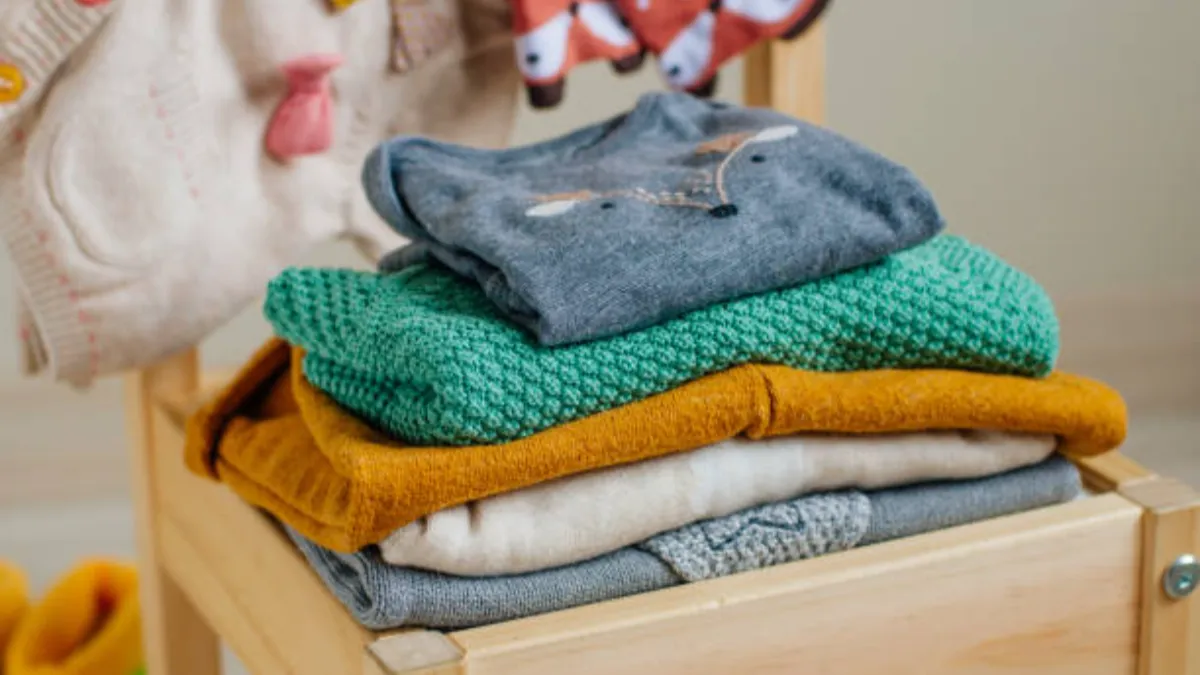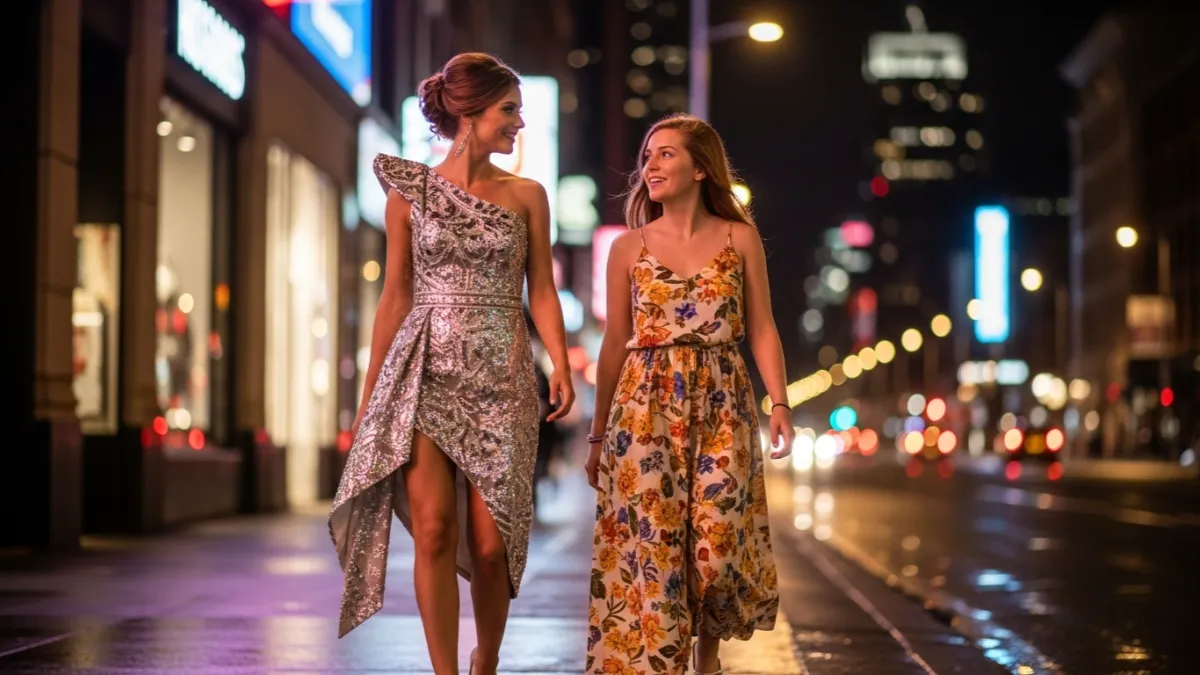Что такое абайя?
Абая — это свободная, длинная одежда, покрывающая тело. Название происходит от арабского слова «abu» или «ayb», что означает «отец», и «yā'a» или «yā'ah», что означает «два одеяния».
Абайя тесно связана с Саудовской Аравией и ее религиозными ценностями. Ее носят мусульманки во многих частях мира, включая Малайзию, Пакистан и Индию.
Абая покрывает все тело, кроме лица, рук и ног. Наиболее распространенный фасон — черного цвета, но вы можете найти их и в других цветах. Абая обычно имеет длинные рукава и поставляется с капюшоном, который можно надеть на голову для дополнительной защиты от солнца или дождя.
В разных историях и культурах абайю называли по-разному, включая кафтан, джеллабу, галлабию и уманию.
Виды абайи
Существует много видов абайи, традиционного платья, которое носят мусульманки. Самая простая абайя сделана из цельного куска ткани и не имеет пуговиц, молний или других застежек. Этот тип обычно носят женщины в странах Персидского залива и других странах, где широко соблюдаются исламские дресс-коды.
Другие типы абай включают в себя:
Традиционные абайи:
У них длинные рукава, которые закрывают руки и доходят до запястий. У них также высокий вырез, который закрывает большую часть лица, оставляя открытой только область вокруг глаз, чтобы вы могли ясно видеть. Традиционные абайи бывают самых разных цветов и стилей, включая те, на которых есть вышивка.
Скромные и современные абайи:
Они похожи на традиционные, но более модные и имеют современный дизайн, например, короткие рукава или вырезы.
- Тобе, которая представляет собой длинную, до щиколотки, одежду с широкими рукавами. Обычно ее делают из легкого материала и носят с нижним бельем, таким как кафтан или боди. Тобы обычно носят мужчины в таких странах, как Саудовская Аравия, Оман и Йемен. Однако они также популярны среди женщин в других странах, таких как Бахрейн, Пакистан и Сомали, где они стали частью традиционного дресс-кода.
- Джеллаба, который представляет собой свободное одеяние с широкими рукавами, которое существует во многих различных стилях и вариациях. В Марокко, например, джеллаба известна как буррата, а в Алжире ее называют курткой зуав. Слово джеллаба происходит от арабского слова jilbab, означающего «закрывать».
Если вы планируете купить абайю, вы можете быть сбиты с толку различными типами абай, доступными на рынке. Различные стили абайи дадут вам разный внешний вид, и не существует универсального размера, когда дело касается абайи.
Вот некоторые из самых популярных видов абай:
Длинная абайя
Длинная абайя — один из самых популярных видов абайи на рынке. Обычно ее надевают поверх платья или юбки, и ее можно носить с различными платками, включая хиджаб и химар. Длинная абайя имеет свободный крой, который скрывает форму вашего тела и позволяет легко двигаться. Рукава этого типа абайи обычно достаточно длинные, чтобы полностью закрыть руки, и многие люди предпочитают именно этот вид, потому что он дает им больше свободы для движений, не чувствуя себя скованными одеждой.
Короткая абайя
Короткая абайя — еще один популярный выбор среди мусульманок, которые хотят прикрыться, но при этом иметь возможность свободно двигаться. Этот тип идеально подходит тем, кто хочет носить что-то удобное, что не стесняет их движений в любое время. Рукава короче, чем у длиннорукавных
Абая религиозна?
Абайя — это не религиозная, а традиционная одежда.
Многие люди считают абайю религиозной обязанностью мусульманских женщин. Однако это не совсем так, потому что Пророк Мухаммад (мир ему и благословение Аллаха) никогда не говорил, что ношение абайи является обязательным для мусульманских женщин. Он упомянул об этом только в одном хадисе (традиции) о женщине, которая сказала ему, что ей жарко, потому что она носит обтягивающее платье под своей абайей, поэтому он посоветовал ей носить более свободную одежду под ней. В другом хадисе он также упомянул, что не должно быть никакой вуали между мужчинами и женщинами, кроме их одежды, так что он мог иметь в виду, что не должно быть никакой вуали между мужчинами и женщинами, кроме их одежды или тел, когда они вместе дома или в общественных местах, где они встречаются друг с другом лицом к лицу, например, на рынках.
Абая — арабское слово, означающее «плащ». Также известна как химар в Малайзии и Индонезии, джилбаб в Индонезии, баджу коко в Малайзии и бурка или чадри в Афганистане.
Его носят женщины во многих мусульманских культурах, и он не является уникальным для ислама. Фактически, абайя появилась еще до ислама, и самое раннее известное упоминание о ней относится к Месопотамии около 2000 г. до н. э.
Абая существует с древних времен, когда ее впервые стали носить мужчины как свободную верхнюю одежду, чтобы защитить себя от солнечных ожогов или как средство согреться в холодную погоду. Позже она стала популярной среди женщин, которые носили ее, чтобы прикрыть свое тело, отправляясь за покупками или обедая в ресторане
Абайя была частью арабской культуры на протяжении столетий; ее ввел сам Пророк Мухаммад (мир ему и благословение Аллаха)! В настоящее время она стала неотъемлемой частью мусульманской одежды женщин по всему миру! Наиболее распространенной причиной, по которой некоторые мусульманки носят абайю, является то, что они считают ее частью своей культуры и традиций, которые были переданы им от матерей, бабушек или прабабушек, которые жили в арабских странах, прежде чем мигрировать в другие части света, такие как Европа, Америка или даже Африка!
Как носить абайю?
Чтобы правильно носить абайю, вам нужно закрыть все части тела, кроме лица и рук. Голова должна быть покрыта либо платком, либо хиджабом (головной убор). Однако некоторые абайи идут со встроенными платками или хиджабами, поэтому нет необходимости беспокоиться о том, чтобы надевать их отдельно; просто наденьте абайю поверх своей обычной одежды, и вуаля! Вы готовы выйти!
Чтобы узнать больше о том, как носить абайю, вот несколько советов:
- Создайте свой стиль абайи. Выбирайте из множества дизайнов и цветов, включая цветочные принты и однотонные цвета.
- Носите абайю с леггинсы или колготки для более стильного вида.
- Убеждаться Длина вашей абайи ниже щиколоток. Подол должен быть как минимум на 2–4 дюйма выше ваших ног, когда вы стоите прямо.
- Выберите ткань, которая легкий но все еще достаточно непрозрачный, чтобы адекватно закрыть ваши ноги и руки. Это может варьироваться в зависимости от того, где вы живете — в более теплом климате будет достаточно более тонкой ткани, в то время как в более холодном климате необходимы более толстые ткани, чтобы вам было тепло и уютно!
- Если вы надеваете длинную юбку или платье под абайю, убедитесь, что она плотно прилегает к талии, чтобы не выскальзывала из-под нее, когда вы садитесь или наклоняетесь. Вы же не хотите, чтобы кто-то увидел, что под ней!
Где носят абайю?
Абайю носят на Ближнем Востоке и в других странах, таких как Пакистан, Малайзия и Индонезия. В некоторых странах, таких как Турция, Иран и Саудовская Аравия, мусульманкам не обязательно носить абайю, вместо этого им следует носить длинные юбки или платья, полностью закрывающие тело.
Абайю носят
Абайю носят не только на Ближнем Востоке, но и женщины в других странах, таких как Индонезия и Малайзия. Некоторые мусульманки также носят абайю, когда идут в школу или на работу. В некоторых странах мусульманки не обязаны носить абайю. Однако их все равно поощряют это делать их семьи и общины. Например, в Индонезии ношение абайи рассматривается как знак уважения к Богу и культуре страны.
Происхождение и эволюция абайи
Слово «абая» происходит от арабского слова «аба», что означает «плащ». Абая — традиционный плащ, возникший в Саудовская Аравия в 7 веке после того, как Пророк Мухаммед переехал туда со своими последователями (известными как мухаджирун). Абайя покрывает все тело, кроме лица, ног и рук, оставляя отверстие наверху для головы женщины, чтобы она могла легко видеть сквозь нее, не поднимая ее каждый раз, когда она хочет оглядеться вокруг.
В доисламской Аравии мужчины носили плащи, называемые сауб или дишдаша, а женщины носили плащи, называемые джильбаб или бурка. Сауб также носили женщины как верхнюю одежду, но он был короче джильбаба. Абая похожа на сауб и джильбаб, но у нее нет рукавов и она не достигает ниже колен, как сауб.
В донефтяной период в Саудовской Аравии бедуинские женщины носили черные шерстяные абайи поверх длинного платья. Вырез каждой абайи украшала широкая золотая отделка. Только жены шейхов или торговцев могли позволить себе покупать шелк.
В 70-е и 80-е годы женщины носили абайи, накинутые на голову, собранные на талии и заправленные под руку. Абайи приобрели новый облик в 1990-е и начале 2000-х годов, когда женщины начали носить более вычурные, приклеенные стразы и блестки. Были созданы новые фасоны, которые позволяли дополнительно украшать эти блестящие наряды. Абайи недавно стали модным трендом, заменив традиционную роль скромной одежды в мусульманских странах.
Несмотря на то, что абайя изначально была символом скромности, сегодня многие женщины предпочитают носить ее как средство выражения своих убеждений через моду, а некоторые даже используют ее как часть своего личного стиля или идентичности.
Материалы, используемые при изготовлении абайи
Абайи часто изготавливаются из шелка, атласа или хлопка. Вы также можете найти абайи из вискозы, крепа и даже шерсти.
Если вы ищете долговечную абайю, то вам нужно выбрать тот, который сделан из шелка или атласа 100%. Эти материалы не только удобны, но и прослужат дольше, чем другие ткани.
Если вы хотите, чтобы абайя была прочной и простой в уходе, то рассмотрите вариант покупки вискозного материала. Ткань легкая, но при этом прочная и устойчивая к складкам. Вискозу можно легко чистить вручную или стирать в стиральной машине без каких-либо проблем.
Хлопковые абайи пользуются популярностью потому что они доступны по цене и просты в носке и уходе. Если вы хотите абайю, которая выглядит элегантно и в то же время функциональна, то выбирайте хлопчатобумажную, так как эти материалы доступны в разных цветах и дизайнах, которые отлично подойдут для любого случая!
Ключевой вывод
Абаи являются неотъемлемой частью мусульманской культуры. Они являются обязательными для мусульманских женщин, и их носят в разных формах в зависимости от того, где вы живете.
Исламская мода — это огромная индустрия, в которой множество компаний производят абайи, отвечающие самым разным потребностям. Производители абайи производят широкий ассортимент высококачественных абай для клиентов по всему миру. Они предлагают свои услуги по доступным ценам, чтобы каждый мог ими насладиться, не тратя слишком много денег. Существует множество производители женской одежды с различными услугами, такими как оптовая продажа одежды на заказ, поэтому необходимо понять свои потребности и выявить основные факторы, которые влияют на вас при выборе абайи.
Заключение
В этой статье мы рассказали все, что вам нужно знать об абайях: как их носят, как они выглядят и где их можно купить. Надеемся, что наше руководство было полезным и информативным!




